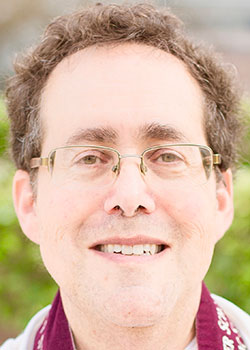Most Jews would associate 'hametz' (leaven) with the festival of Pesach. After all, it is before that holiday that we remove all 'hametz' from our homes, burn some 'hametz,' nullify it with a vow on the morning before the first Seder and appoint a Rabbi to be our agent to sell any remaining 'hametz' to a non-Jew.
During the entire festival of Pesach, no 'hametz' is to be found in our homes or in our possession, nor do we eat any 'hametz' throughout these eight special days. The most popular reason given for avoiding 'hametz' is found in the Torah itself -- that our ancestors left Egypt in such a hurry that they had no time for their dough to rise. As a memorial to their hasty flight, we abstain from 'hametz' just as they had to do, out of necessity.
Today's Torah reading provides another possible justification for contemporary traditional practice, linking our avoidance of 'hametz' to a broader view of Judaism and Jewish institutions throughout history. In describing the offerings of the 'Mishkan' (Tabernacle) and later of Solomon's Temple in Jerusalem, the Torah records that "no meal offering that you offer to the Lord shall be made with leaven, for no leaven or honey may be turned into smoke as an offering by fire to the Lord."
What is the reason for this peculiar restriction? According to Rabbi Moses ben Maimon (11th Century Spain and Egypt), pagan religion in the biblical period offered meal offerings with leaven and with honey. Since one of Judaism's central struggles was to uproot pagan practices from among the Jews, the Torah here prohibits a practice that Jews would have recognized as idolatrous.
In a sense, therefore, Rambam avoids the question of why 'hametz,' specifically, is forbidden. Instead, he points to a larger opposition to idolatry leading to the general rule that anything they do, we prohibit. Another attempted explanation was to read symbolic value into the forbidden items.
Thus, in Sefer Ha-Hinnukh (13th Century, Spain), the author of that book explains that by distancing 'hametz' -- which is made over a great amount of time -- far from his offering, a person will attain the idea of acquiring the quality of alertness, lightness and swiftness in deeds on behalf of the Holy Blessed One. Just as it takes a significant amount of time for leavening to happen, so too a person might become slothful in fulfilling our religious obligations. By keeping 'hametz' away from our offerings, we remind ourselves to act swiftly and with resolution in the service of Judaism and its teachings.
Sefer Ha-Hinnukh offers a second symbolic reading, claiming that we avoid 'hametz' "because leaven puffs itself up . . . Hence, they were rejected to imply that 'every haughty person is an abomination to the Lord.' "
Ultimately, however, none of these explanations are entirely satisfactory. Thus, Ramban (11th Century Spain and Israel) admits that "it may be that there is in all these matters some secret hidden from us," and Sefer Ha-Hinnukh concedes that "the reasons from this precept are too hidden to find even a small hint of them."
So, with what are we left? The bottom line is that 'hametz' is prohibited in any offering on the altar of the Mishkan or the Temple. And that same prohibition applies during Pesach, the festival which celebrates the liberation of the Jews from slavery and the beginnings of our service to God and humanity as a nation of priests.
Once a year, for slightly more than a week, we elevate our homes to reflect the same level of purity and holiness that characterized the Temple in Jerusalem. Without claiming to know the definitive justification, we fall back on the bedrock values of obedience, loyalty and identity. Because we are Jews, because our people have always done this, and because the Torah and the Talmud -- our links to God's presence in our lives -- command us, we remove 'hametz' from our homes. Each year, our table becomes an altar, and our homes become centers of sanctity where God's presence can dwell. By removing 'hametz' from our homes, we restore the center -- our homes -- to that which is central -- our heritage, our people and our God.

